I am using adb(Android Debug Bridge) and working with shell in the Genymotion Emulator(I have mentioned every configurations at the end of this question).
I execute "adb shell" and get the shell successfully but the problem is that I get the root access on the emulator. I don't want root shell, I want the normal one as we get when we execute 'adb shell' on the actual device connected via USB. How to achieve it ?
Any help would be highly appreciated.
*Configuration :
Ubuntu 13.10, 32-bit.
Eclipse 4.2 with ADT.
Genymotion Emulator(To be specific, I was using Android 4.3 here).


